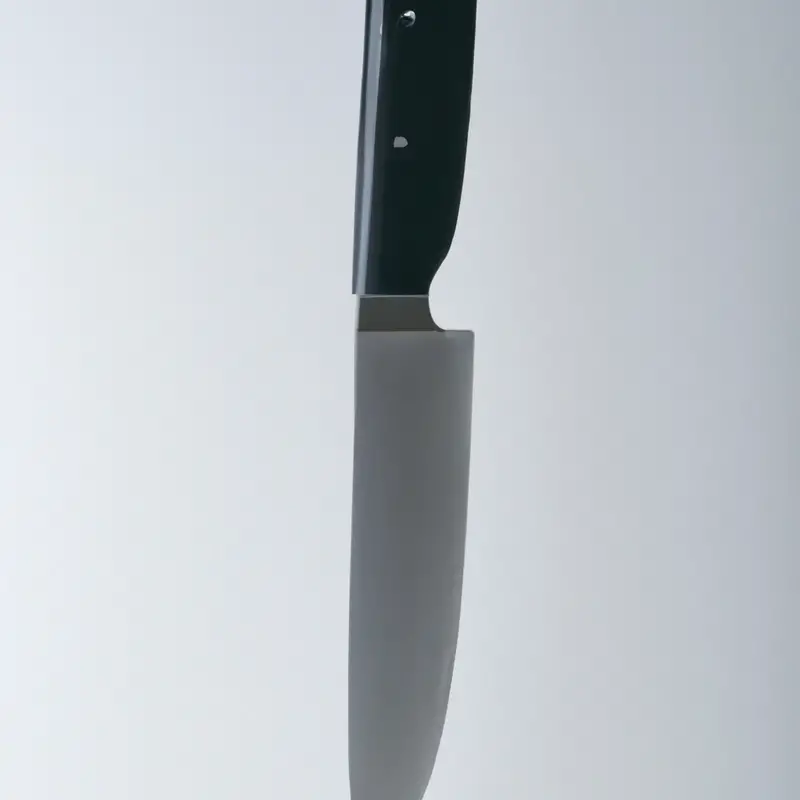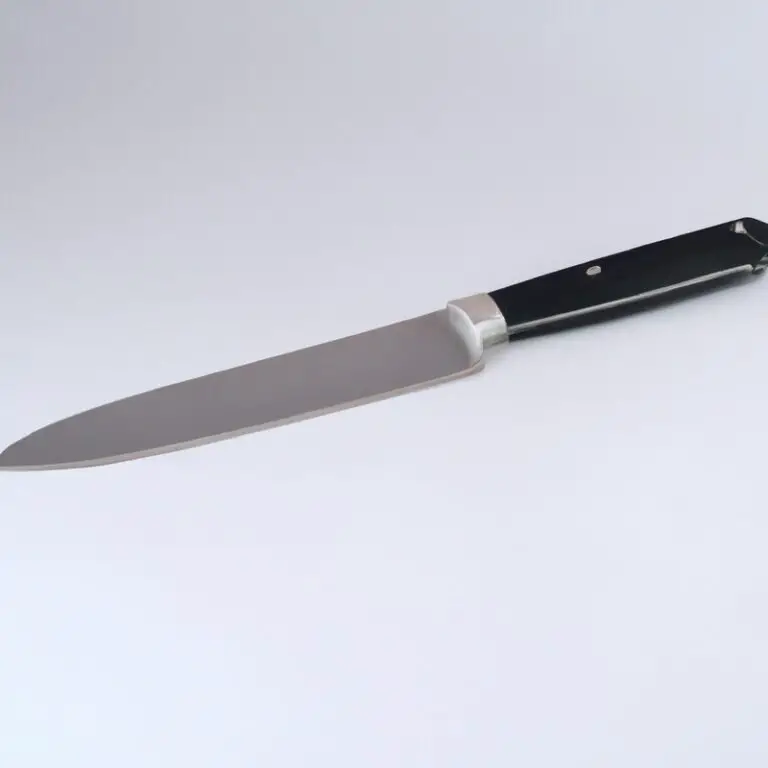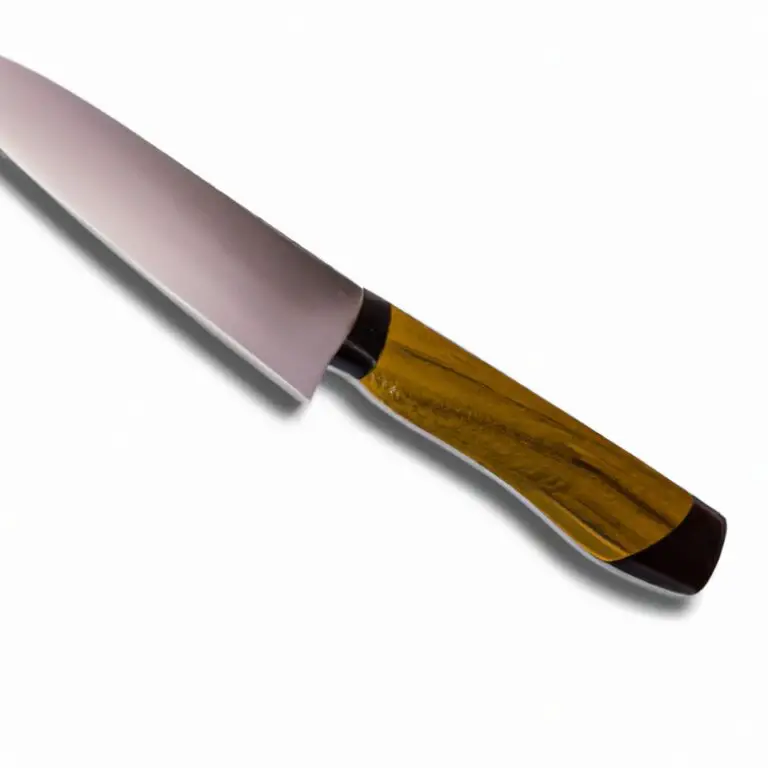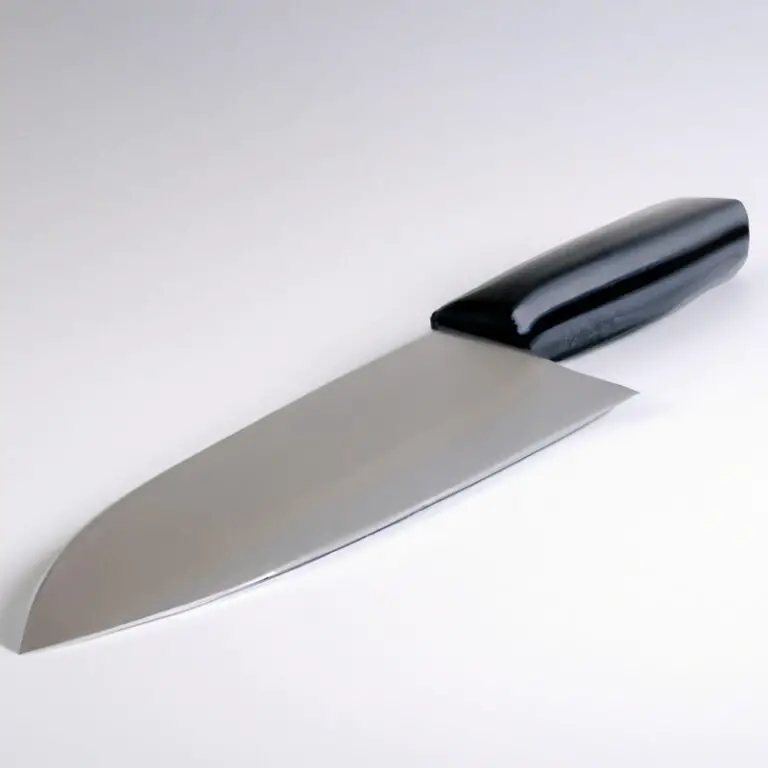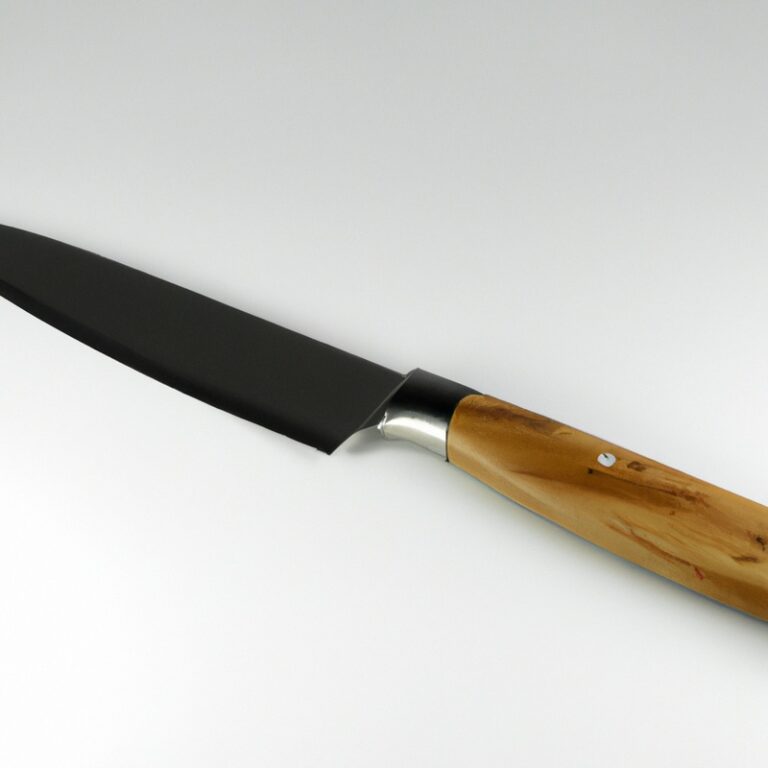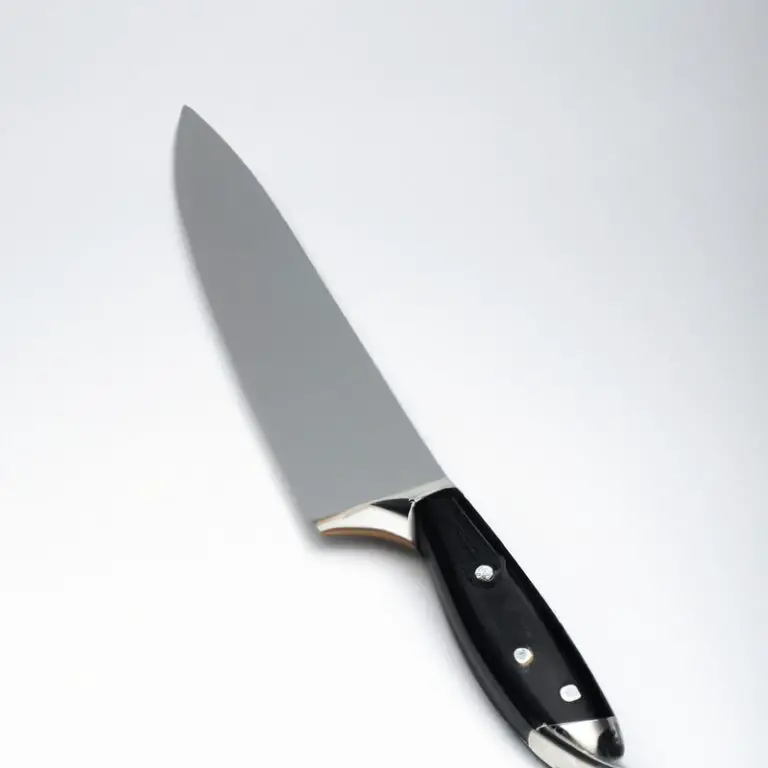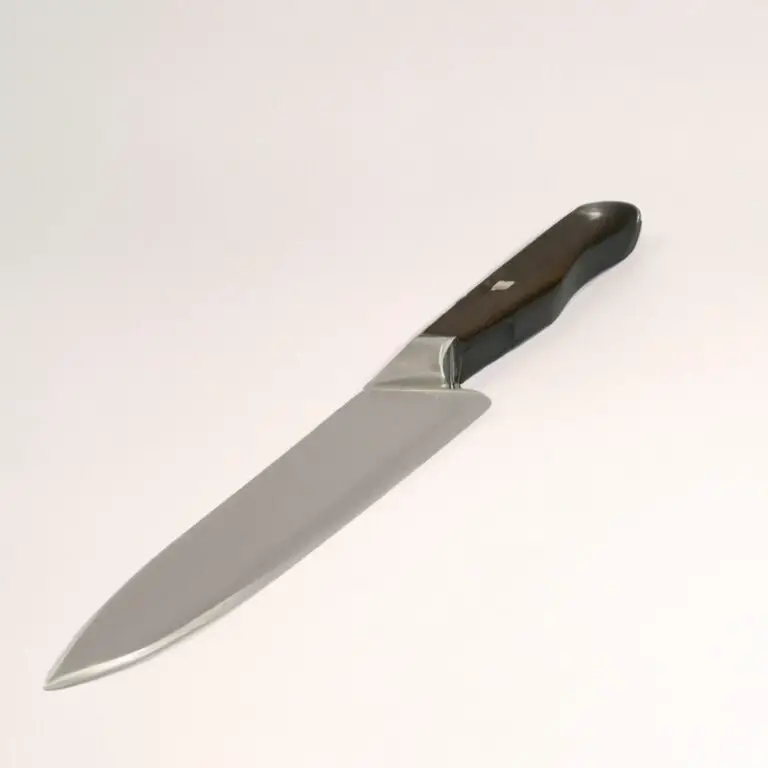What Are The Key Features Of a Chef Knife For Professional Use? Explained
Key Takeaways:
- A good chef’s knife must have a high-quality and sharp blade to cut through various ingredients with ease and precision.
- The handle of a chef knife should be ergonomic and comfortable to grip for extended periods, providing excellent balance and control for the user.
- Professional chef knives are made from durable materials like carbon or stainless steel, ensuring longevity and resistance to wear and tear.
- A chef’s knife’s size and weight are crucial factors to consider, with a blade length of 8-10 inches and an overall weight of 6-10 ounces being ideal for most professionals in the kitchen.
Imagine this scenario – you’re in a professional kitchen, and the orders are piling up. You need a knife that you can rely on – one that’s sharp, well-balanced, and versatile enough to handle different tasks with ease.
That’s where a chef knife comes in.
But with so many options available, how do you choose the right one? In this blog post, I’ll take you through the key features of a chef knife for professional use.
From the blade material to the handle design, we’ll explore everything you need to know to make an informed decision.
So let’s get started!
| Feature | Description |
|---|---|
| Blade length | Usually 8-10 inches for improved control when chopping, slicing and dicing meats, vegetables and fruits. |
| Blade material | High-carbon **steel** for durability, strength, rust resistance and stain resistance. Some chef knives use ceramic material instead. |
| Weight | Heavier knives provide better control and minimize wrist strain, while lighter knives enable faster chopping and less fatigue. |
| Handle | Comfortable and non-slip grip for extended use; materials may include wood, plastic, or metal. |
| Tang | Full tang for better balance, durability, and control; partial tang may be suitable for occasional use. |
| Bolster | Thick piece of metal at the transition area between the blade and handle, providing a comfortable grip and added balance. |
| Sharpness | V-shaped sharpened edge with a 15-20 degree angle for precision cuts, easy maintenance and durability. |
| Flexibility | Stiff blade for heavy-duty tasks such as chopping dense vegetables and meats, while flexible blade for softer materials and intricate cuts. |
| Price | Professional chef knives can range from $50 to $400 and more, depending on the materials, brand, and features. Consider the budget and the intended use before purchasing. |
Understanding the anatomy of a chef knife: Parts and their functions
A chef knife consists of several parts, each playing a crucial role in its function. The blade is the metal portion that does the cutting, and its material determines its durability, sharpness, and resistance to corrosion.
The blade length affects the knife’s versatility and maneuverability, and the edge style determines the type of food it’s best suited for cutting.
The handle is the part of the knife used for gripping, and its material and design affect comfort and ease of use. The tang is the metallic portion extending from the blade that runs through the handle, and its type affects the knife’s strength and balance.
The bolster and finger guard protect against injury and ensure proper balance while cutting.
The thickness of the blade determines its precision and balance, with thin blades better suited for precision cuts and thick blades for heavy-duty tasks. Lastly, proper maintenance and care ensure optimal performance and longevity of the chef’s knife.
Understanding the anatomy of a chef knife is essential for choosing the right one for your needs and to ensure it performs optimally and lasts for years to come.
Blade material: types, grades, and suitability for professional use
The blade material of a chef knife is crucial for its performance and longevity. There are numerous options available, but the most common materials used are stainless steel, carbon steel, and high-carbon stainless steel.
Stainless steel is corrosion-resistant and easy to maintain but has lower hardness, meaning it dulls quickly.
Carbon steel has high hardness but is susceptible to rust and requires regular maintenance. High-carbon stainless steel combines the best of both worlds, providing excellent sharpness, durability, and rust resistance.
Different grades of each material can vary in quality and performance, but professional chefs typically prefer higher grade materials for their knives.
A good chef knife should have a blade of at least 58 on the Rockwell hardness scale for optimal sharpness and edge retention. Ultimately, the suitability of a blade material for professional use depends on the specific needs and preferences of the chef.
Those who prioritize sharpness and edge retention may opt for high-carbon stainless steel, while those who prioritize corrosion resistance and ease of maintenance may prefer stainless steel.
Blade length: what size is ideal for versatile use and ease of handling?
The blade length of a chef knife is a crucial factor that influences its versatility and ease of handling. The most commonly preferred blade length for a professional chef knife is between 8 and 10 inches.
These lengths offer a balance between speed, precision, and control.
A shorter blade (around 6 inches) can provide better control and maneuverability while performing intricate tasks such as peeling, trimming, and slicing small fruits and vegetables. However, it may not be suitable for handling large cuts of meat or larger vegetables, often requiring chopping and rocking motions.
On the other hand, longer blades (above 10 inches) offer more speed and power, making them ideal for larger cuts of meat and whole vegetables.
However, they might be difficult to handle when performing precise cuts and intricate tasks. It is crucial to choose a blade length that suits your needs and style of cooking.
Your comfort level and the size of your hand also play a significant role in determining what blade length will work best for you.
Ultimately, the ideal blade size that combines versatility, control, and ease of handling depends on personal preferences.
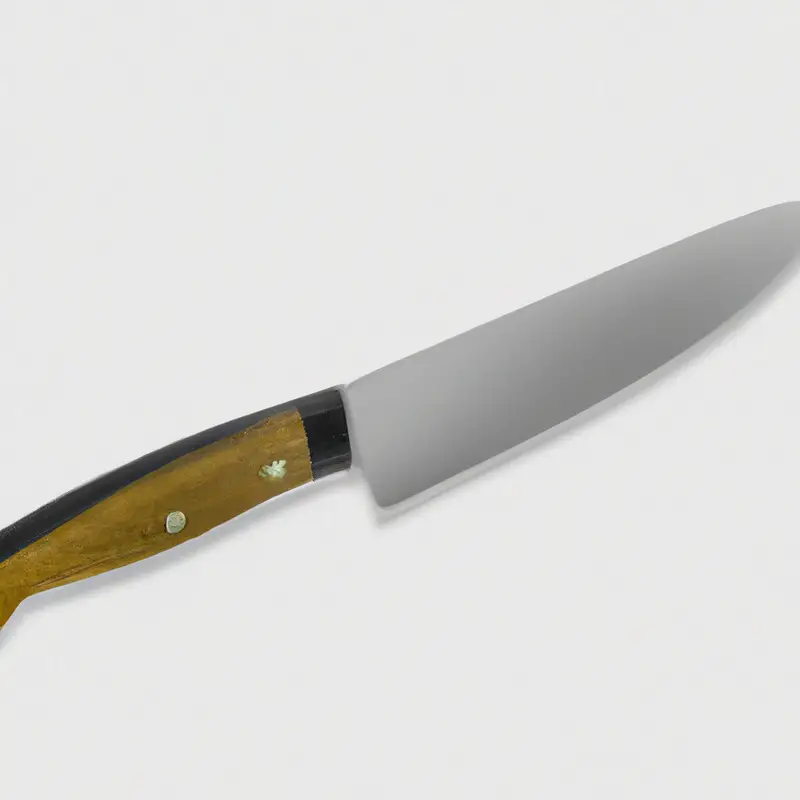
Blade edge: Straight vs. serrated vs. granton edge, which one to choose?
Blade edge is an essential factor when choosing a chef knife. Straight edges offer precision cutting and are ideal for slicing meat and vegetables.
Serrated edges are perfect for cutting through tough surfaces like bread, and granton edges are unique with their wavy non-sharp edges that reduce friction and minimize adhesion, making them perfect for thin slicing.
Ultimately, the choice of blade edge depends on the cook’s needs and expertise. A versatile knife with a straight edge blade is the best option for most chefs.
Handle material: what works best for grip, comfort, and durability?
The handle is just as crucial as the blade when it comes to a chef knife’s functionality. The most common materials for knife handles include wood, plastic, rubber, and metal.
For optimal grip and comfort, most chefs prefer a handle made of rubber or plastic.
These materials provide a secure grip even when wet, reducing the risk of injury. Wooden handles can be comfortable but require more maintenance.
Metal handles, on the other hand, are durable, but they tend to be heavier, which affects balance and precision.
Ultimately, the choice of handle material should be based on personal preferences in terms of grip, comfort, and durability.
Handle design: shape, length, and weight distribution for better control and balance
A chef knife’s handle design is critical for better control and balance. The handle’s shape, length, and weight distribution can affect your grip, comfort, and overall performance.
A well-designed handle should provide a secure grip without causing any strain on your wrist or hand.
A handle’s shape can vary from traditional to modern designs. The shape should suit your hand size and grip style.
Handles with a tapered or ergonomic design can provide a better grip, reduce hand fatigue and minimize the risk of injury.
The length of a handle also affects control and balance. A handle that is too long or too short can cause discomfort and hinder your chopping and slicing movements.
A handle length that is proportional to the blade length is ideal for optimal performance.
Weight distribution is another crucial factor in handle design. A well-balanced knife allows for more precise control, reducing the risk of injury and enhancing overall performance.
The handle’s weight should complement the blade weight for optimal balance.
Overall, handle design is a crucial aspect of a chef knife and should be carefully considered when choosing a knife for professional use. A well-designed handle can provide better control and reduce fatigue, enhancing the user’s performance and safety.
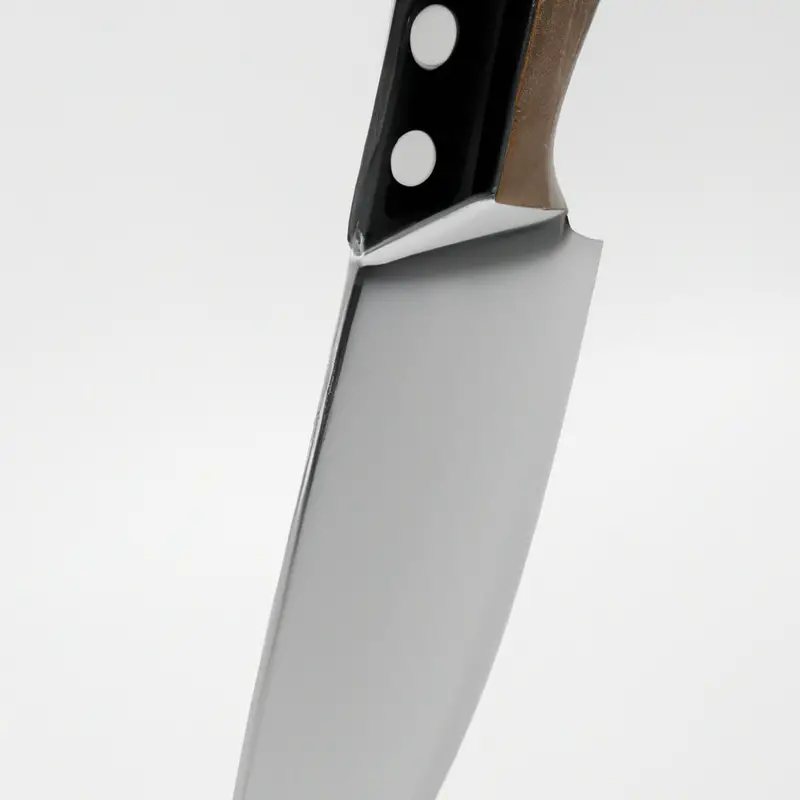
Tang types: Full vs. partial tang and its impact on strength and balance
Tang refers to the part of the blade that extends into the handle. A full tang knife has a blade that goes all the way through the handle, while a partial tang only goes partway.
Full tang knives are generally stronger and more stable, providing better balance and control.
Partial tang knives may be lighter and easier to maneuver but may lack the rigidity and durability of a full tang knife. For professional use, a full tang knife is highly recommended due to its strength, balance, and reliability.
Bolsters and finger guards: Purpose and how to choose the right one for safety, balance, and comfort
Bolsters and finger guards on a chef knife not only provide safety but can also affect the balance and comfort of the knife. A bolster is the thick shoulder between the blade and handle, while a finger guard sits in front of the handle to prevent slipping fingers from reaching the blade.
The purpose of a bolster is to add weight and balance to the knife, while the finger guard provides a comfortable grip and increases safety.
When choosing a chef knife, consider the height and thickness of the bolster and the size and shape of the finger guard to ensure a secure and comfortable grip. Bolsters and finger guards can vary in size, material, and design, so it’s important to choose one that fits your hand and grip style.
A well-designed bolster and finger guard can make a big difference in the comfort, balance, and safety of a chef knife.
Blade thickness: thin vs. thick blades and how it affects cutting precision and balance
The thickness of a chef knife’s blade impacts balance and cutting precision. Thin blades offer less resistance, allowing for easier and more precise cuts, while thick blades are heavy and sturdy, providing greater control and power for chopping through dense materials.
In professional settings, blade thickness preference can vary depending on the type of task at hand.
Thin blades are better suited for tasks that require precision, such as filleting fish or slicing vegetables, while thick blades excel at heavy-duty tasks like breaking down meat or chopping bone. Overall, the choice between thin and thick blades depends on the user’s cutting style and the tasks they frequently perform.
Maintenance and care: How to keep your chef knife in top condition for optimal performance
Taking care of your chef knife is crucial for ensuring that it performs optimally and lasts longer. Here’s how to maintain and care for your chef knife:
- Handwashing: Always handwash your knife using mild soap and warm water after use. Avoid putting it in the dishwasher, which can dull the blade.
- Drying: Dry your knife immediately after washing with a clean towel to avoid rusting.
- Sharpening: Sharpen your knife regularly using a sharpening stone, honing steel, or electric sharpener.
- Storage: Store your chef knife in a knife block, sheath, or on a magnetic strip. Avoid placing it in a drawer where it can rub against other utensils and get damaged.
- Handling: Use your chef knife only for its intended purpose and avoid using it to cut through bones or frozen foods, which can damage the blade.
By following these simple maintenance and care tips, you can keep your chef knife in top condition and enjoy optimal performance for years to come.
Final Verdict
A chef knife is the most essential tool for any professional chef, and having a good one is crucial to success in the kitchen. Its key features include blade material, length, edge, handle design, tang type, bolsters, finger guards, blade thickness, and maintenance.
Understanding the anatomy of a chef knife and choosing the right one for your needs will provide you with greater control, balance, and precision, allowing you to create culinary masterpieces with ease.
Remember, investing in a high-quality chef knife is a long-term investment in your career, and proper care and maintenance will ensure its longevity. By implementing the insights shared in this article, you will be well on your way to becoming a skilled and respected chef.

